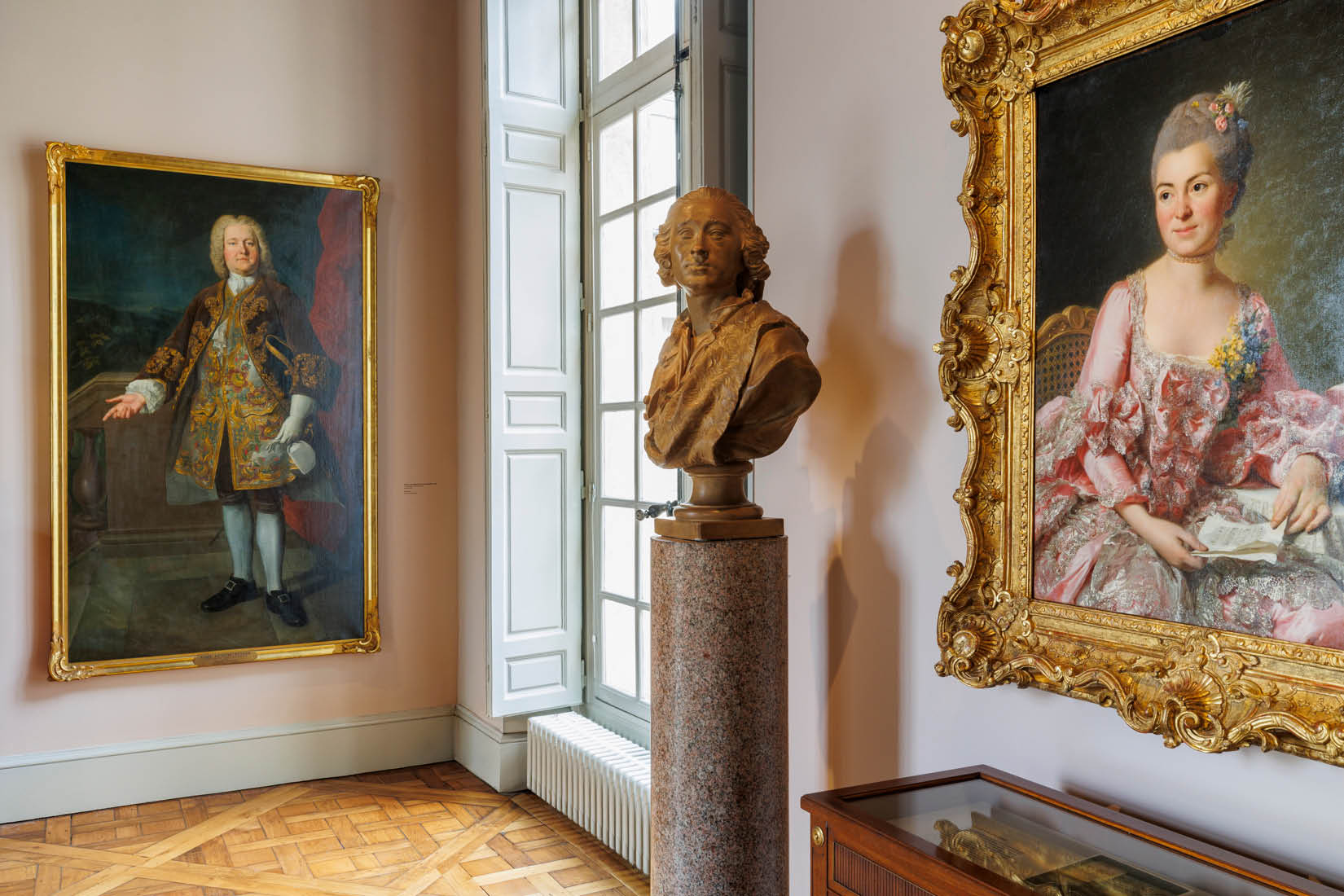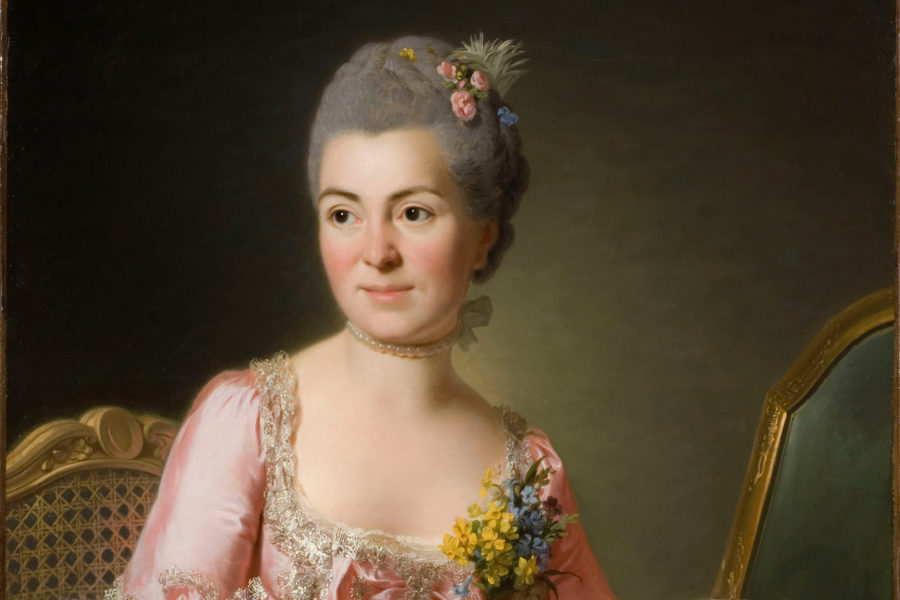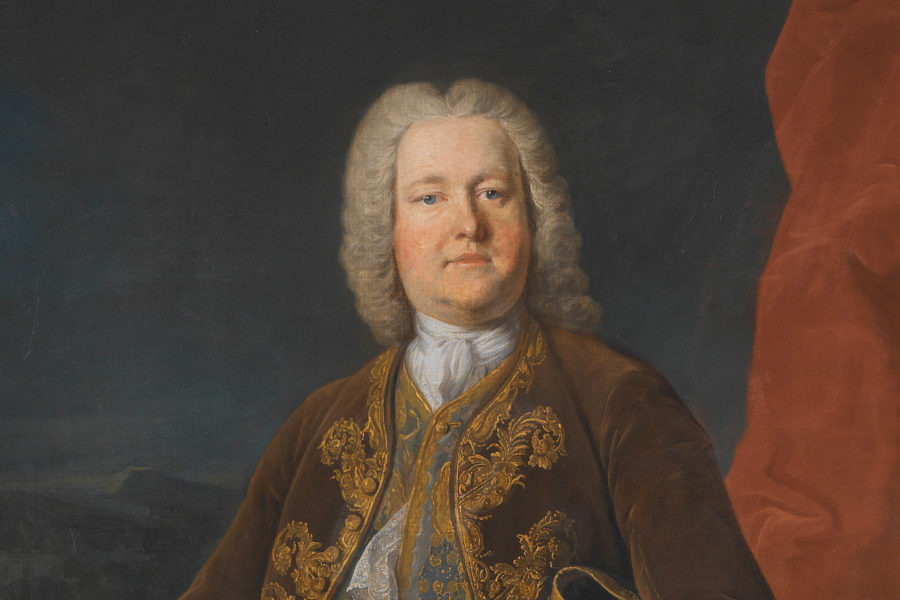Spring 1965 While searching for a new place in which to exhibit his extensive collection, art historian Gunnar W Lundberg came across a private mansion in the Marais district of Paris and persuaded the Swedish government to purchase it. This was the beginning of the Institut suédois, whose permanent exhibition presents a selection of the works assembled by Gunnar W. Lundberg with passion and precision, a collection that features a total of 700 paintings, 1,400 drawings and 4,000 graphic works, as well as sculptures, medals and antiquarian books and includes works by Alexander Roslin, Louis-Jean Desprez and Gustaf Lundberg.
May 2025 A new thematic exhibition offers a fresh perspective on the major movements of the 18th century, the period most represented in the collection. The Enlightenment, which marked the golden age of Franco-Swedish relations, was a period of great progress but also one of turmoil. This duality is explored through the eyes of French and Swedish artists, who captured a changing world. Organised in four sections, the exhibition looks at new conceptions of the figure of the artist, the future, the past and the North.
In an interplay of echoes and resonances, this perspective weaves a dialogue between the past and the present, both marked by major upheavals.
The Figure of the Artist
With the development of art academies and the progressive abolition of guilds, the 18th century witnessed the emergence of the modern figure of the artist. A new aristocratic and bourgeois class, collecting art in accordance with their tastes, contributed to this evolution. In parallel, the opening of the Salon in 1737 offered artists unprecedented visibility. This period was a golden age for Swedish artists in Paris. Gustaf Lundberg, Alexander Roslin and Adolf Ulrik Wertmüller made a name for themselves here, notably in portraiture. Reciprocally, French artists, including Guillaume Taraval, Charles Guillaume Cousin and Jacques-Philippe Bouchardon, left their mark on Sweden, notably on the Stockholm Royal Palace, the century’s biggest building project. The exhibition explores the way in which artists portrayed themselves in this context. The artist’s portrait oscillates between intimacy and display: experimental self-portraits, assertions of a certain status, the staging of the body – these portraits show the artist as both model and actor, always united by the same key element: their gaze.
Risk and the Sublime – The Future
The 18th century saw the emergence of new economic phenomena and the first major global financial crisis, in 1720. Bernard Picart’s satire, presented in the exhibition, illustrates the speculative folly of the period. Faced with this instability, the concept of the sublime, theorised by Edmund Burke in 1757, expressed the fascination and the terror inspired by forces capable of destroying mankind. Volcanic eruptions became a major artistic motif, notably that of Vesuvius in 1779, which was brought to public attention through paintings and prints. Sweden has no volcanoes, but it does have mines. The great copper mine in Falun attracted numerous visitors at the end of the century. Visiting it in 1780, the revolutionary Francisco de Miranda likened its mouth to the crater of Vesuvius. From earth to sky: the invention of the hot-air balloon embodied the human dream of elevation. In the exhibition, progress and catastrophe are interwoven mines, volcanoes and hot-air balloons are united by a single flame – a fire that is both creative and destructive. Prometheus and Icarus are its defining figures.
Antiquity Unveiled – The Past
In the 1760s, Paris was gripped with anticomania: the ideals of Antiquity inspired art, architecture and fashion. Rome once again became a major centre for the arts, attracting painters, architects and sculptors. For Swedish artists such as Jean Eric Rehn, a trip to Italy, often via Paris, was a natural rite of passage. As a result, strong links were forged between Stockholm, Paris and Rome in the 18th century. Travelling in the other direction, French architect and painter Louis-Jean Desprez, who trained at the French Academy in Rome, made the voyage to Sweden, where he was engaged by King Gustav III. Meanwhile, at Naples, the excavations at Pompei and Herculaneum inspired reflections on the preservation of cultural heritage. In his History of Ancient Art (1764), a work that became fundamental to modern art history, Johann Joachim Winckelmann raised awareness of a vanished Classical world. This section of the exhibition illustrates the different approaches to Antiquity: some saw its monuments as a timeless model to be imitated, while others drew inspiration from them freely for new creative works. The appeal of ruins reflected both a fascination for the past and anxiety about the future. While the sublime expressed the power of nature, ruins echoed it: a reminder of the inevitable decline of civilisations.
The Other and the North
While some artists, collectors and travellers looked to the South in search of the origins of civilisation, others turned in the opposite direction: to the edges of the known world. This section of the exhibition sheds light on the French fascination for the North, and more particularly for Sápmi (the land of the Samis), which was seen as the counterpoint to civilised Europe. In the 18th century, many French expeditions were made to the north of Sweden, the most famous being that of Pierre Louis de Maupertuis to Lapland in 1736, a voyage that was recounted like an odyssey to the edge of the world. The Sámi, the only indigenous people of Sweden, and indeed Europe, became the archetype of ‘the noble savage’, fascinating the Parisian salons. French and Swedish perspectives diverged: Sweden saw Lapland as a territory to exploit, while France dreamed about it as a primitive place, outside of time and culture.
This new exhibition will be regularly activated in various ways, starting with the first monographic exhibition in 30 years to be dedicated to the artist Louis-Jean Desprez (1743–1804), whose work is widely represented in the collection. A great traveller, painter, architect and engraver, Desprez was one of the greatest theatre designers in Europe. He produced many striking sets for Gustav III, who had invited him to Stockholm to create stage designs for the theatre and festivities.
Exhibition in collaboration with Nationalmuseum, Stockholm, which now manages the collection and permanent exhibition of the Institut suédois. The works presented are from this collection and other Nationalmuseum collections.
Curator: Otto Ruin, within the framework of the Nationalmuseum’s “young researchers” programme.
Scientific committee: Martin Olin, director of the Nationalmuseum collections; Linda Hinners, curator of the Nationalmuseum collections.
Project manager: Maria Ridelberg-Lemoine, heritage and collections manager of the Institut suédois.
This project has been made possible thanks to the generous donation from the Björn and Inger Savén Foundation. Thanks also to the Jacob Wallenberg Foundation for its support.
Useful information
- Free admission, no prior reservation required.


